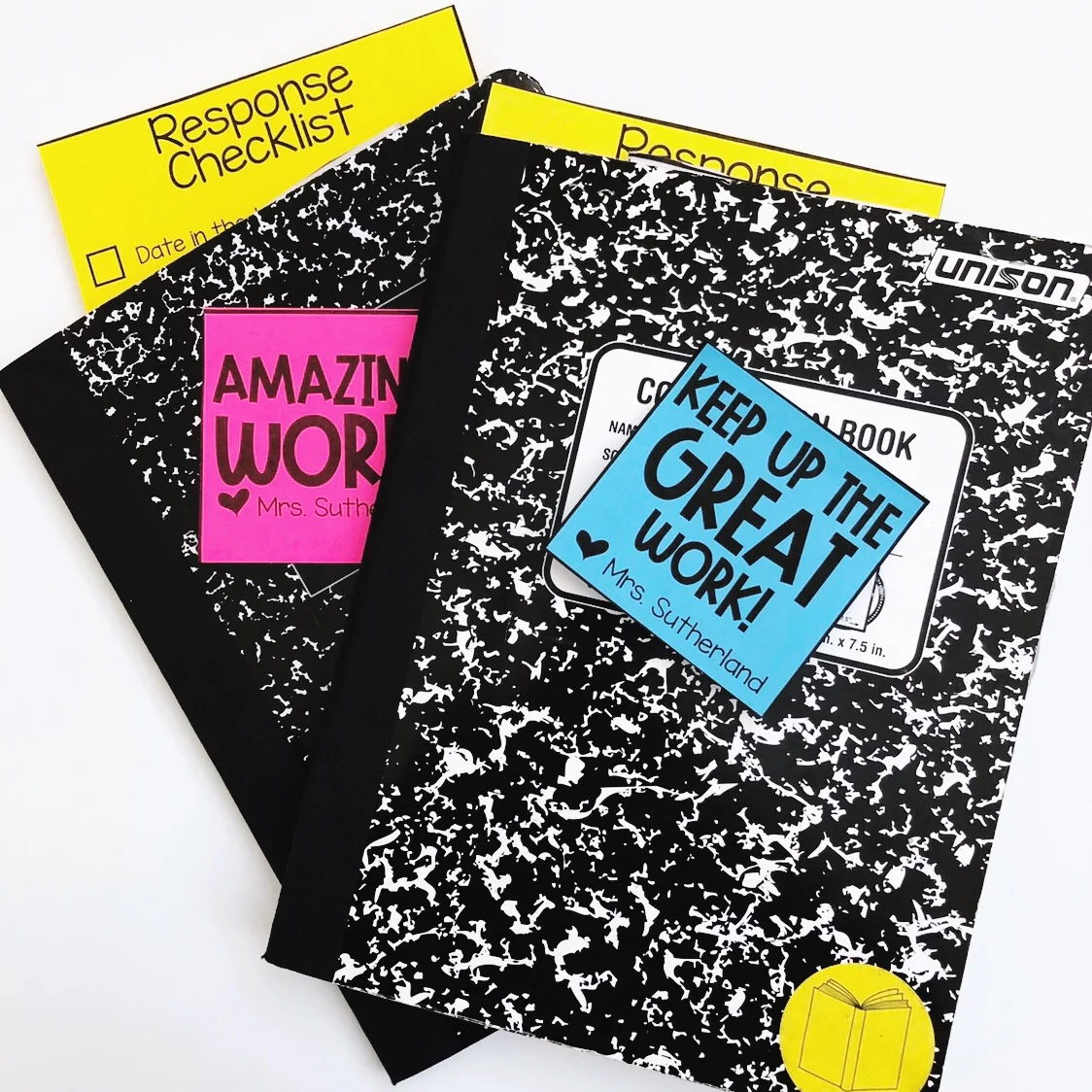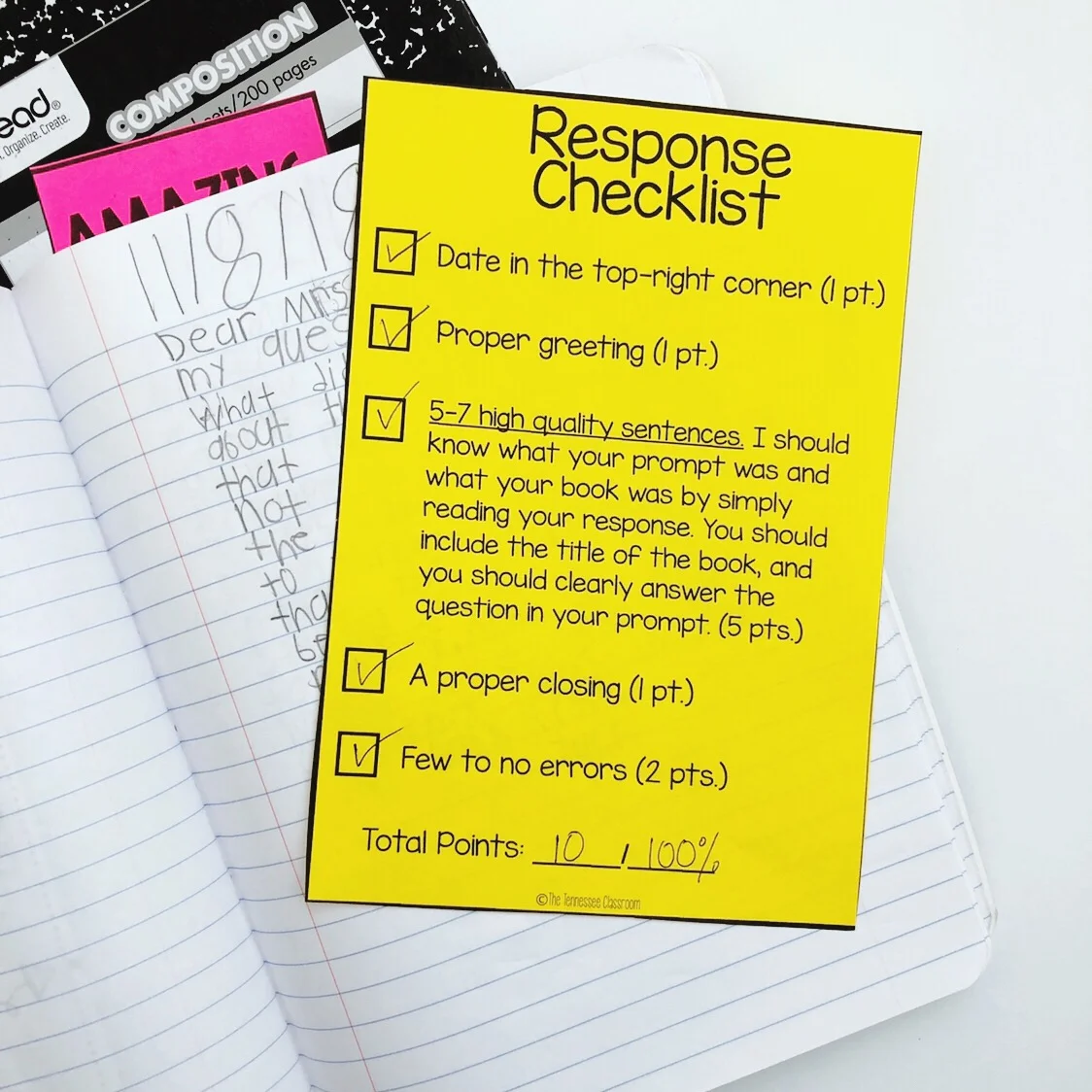Reading Response Notebook System
So, I’ve decided something.
2019 will be the year that I don’t assign my students a bunch of work in their notebooks only to actually read through it 3 months later. This will be the year that I send home their notebooks in May, and I actually know what’s in them…because I graded them. I’ll also know that I really grew my kids in their academics, because I didn’t just grade…I gave meaningful feedback.
But Stephanie…(I’m sure you’re thinking)…how could you possibly manage something like that?
Well, teacher friends. I’m going to start with one notebook at a time.
In fact, I already have.
Meet the reading response notebook:
My system here is full-proof. I’m in love with it, and I’ve used the reading response method here for YEARS with great success. The one thing that always kept the whole idea from being perfect was that I have never been able to actually keep up with grading the responses as well as I should. #teachertruth
I always start the year strong, and then when things start piling on, there’s less of a sense of urgency to grade notebooks. And that all seems like a fine idea until you casually look through one in November and see that a student has been writing “I liked it.” as his response for weeks. 🤦🏻♀️ May or may not be a true story.
So, in an attempt to be a problem-solver, I developed a grading system that I can keep up with. Chances are if my hot-mess teacher self can keep up with it, you likely can, too.
Here’s how it all works:
Figure out your students’ reading levels.
If you don’t know this already, you’ll need to start there. Then, break them into roughly three groups. I have reading response cards that my students use for their notebooks, and they could be used for below, on, and above-level readers in 2nd-3rd grades. I use my students’ reading levels to put them in one of these three groups.
Assign them a color.
You may choose to store response tasks the way I have here, or you may just assign your kiddos a color for their reading groups…however you do it, colors are a great way to group students in a way that isn’t overt. I know what orange means, but they don’t really have a pulse on which color means what…and when they start to figure it out, it’s a great time to collect some new data and switch things around anyways. ;) I signal to my kiddos what their ‘color’ is by putting a dot inside their notebooks (like you can see in the picture below).
And if they switch groups? I go realllll DIY on that mess and cross out their old dot with a black sharpie. Then I put a new one. Not everything needs to be put on Instagram, friends.
Show them what you want their responses to look like, and how it will be graded.
Unless you’re teaching a group of total geniuses, they are likely not going to remember what a high-quality textual response looks like after one lesson. I recommend teaching a lesson on how to do a reading response, but then beyond that…give them something visual. Visual cues are your friend! I stapled both the checklist I will be using to grade my students’ response and an example response into the front cover right next to their dots. Everything they need to be successful will be right at their fingertips, which is only fair.
This is the MOST important part, y’all. Pick ONE response to grade. Yes, you read that right.
I already admitted I haven’t been the world’s best at this…but I’ve gotten better! I wayyyy prefer my new system. The gist: don’t grade them all. Skim them, yes. Put smiley faces on them, sure. Make sure they’re appropriate for school? Absolutely.
Every 2-3 weeks, I collect the notebooks. (I have a big ole bag I have the kids put them in at the end of our reading block, and I knock out as many as possible during planning and lunch, but you do you.) I decide on one date that I am going to grade for all students, but I don’t let them know this date ahead of time. I just simply go through the checklist and rate how they did. I stick the same exact checklist they’ve had all this time in their notebooks on that page and give it back to them. Sometimes, when I’m feeling extra, I’ll put a cute-sy sticky note on the front.
The surprise element of which response will get graded does two things:
It makes them try a little harder on each response.
Trying harder incidentally leads to more growth!
Your feedback also promotes growth, so don’t forget to write little notes of what they’re doing well and where they can improve. They only know what to improve on if you teach them, after all!
And that’s it, y’all. It’s not fancy. It’s not difficult. But it works. My reading notebooks are now utilized in a way that they weren’t before. The kids know I’ll be looking, which adds some purpose to the text evidence. Because, if we’re being honest, no matter how spectacular an assignment is, the kids just will not put their best foot forward if they know you’re not going to be reading it. And if you’re not going to read it, why are you having them do it anyways??
Happy teaching this week, y’all. I hope this idea is just what you needed in 2019, and that you have a whole semester of wonderful teaching moments ahead of you!
If you want the grading system pieces, or the response cards, click on the images to find them! If you want to save a little money, email me @ sutherlandsah@gmail.com and I’ll do a custom bundle for you!
Be sure to connect with me on Instagram, and follow along on TPT to see what is coming next from The Tennessee Classroom!







